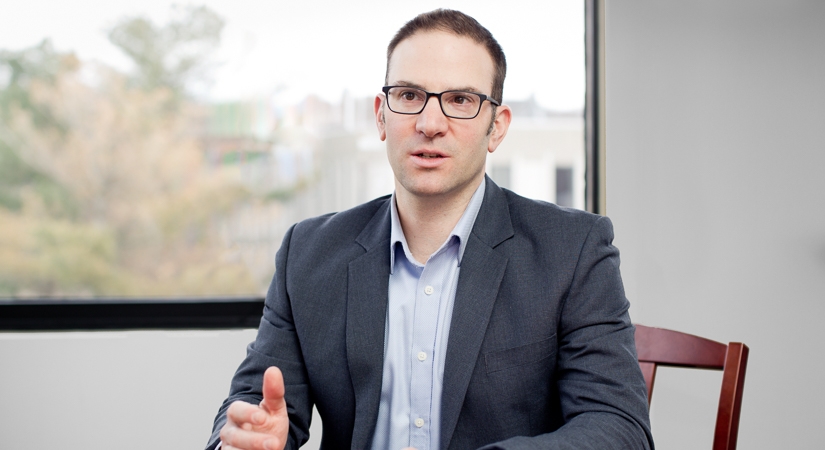EPA Proposes Its First Rule Controlling HFCs Under the AIM Act
On May 19, 2021, EPA published its first major climate change rule under the Biden Administration, proposing to phase down the manufacture and import of hydrofluorocarbons (HFCs) through an allowance-based trading program. The proposal is EPA’s first rulemaking under the American Innovation and Manufacturing Act of 2020 (AIM Act) and will impact numerous sectors of the economy.
Key Takeaways
- Proposal Will Establish an HFC Allowance Allocation and Trading Program. EPA is seeking comment on its framework of allowance-based rules intended to reduce HFC “production” and “consumption” (i.e. generally manufacture and import) by 10% in 2022. By the time the AIM Act’s phasedown is complete in 2036, those reductions will total at least 85%. The proposal includes numerous complex provisions including: establishing the phasedown baselines; several types of allowances; a proposed scheme for allocating allowances; rules for allowance transfers; new control requirements for the production of certain HFCs; rules on international trade; robust enforcement and compliance assurance provisions; and recordkeeping and reporting requirements.
- Stakeholders Affected. The proposed phasedown will have broad implications for manufacturers and retailers of products which contain HFCs, manufacturers and importers of HFCs, and entities that use HFCs in their equipment or processes. HFCs are commonly used in air-conditioning, refrigeration, fire suppression systems, foam blowing agents, and cleaning solvents, among other uses.
- Opportunity for Public Comment. Comments are due on July 6, 2021, and a virtual public hearing will be held in advance of that date on June 3. Industry stakeholders should evaluate and comment on the proposed rule, which will form a key regulatory precedent for future AIM Act rulemakings in the coming years with potentially significant environmental and economic consequences.
Key Provisions of the Proposed Rule
HFCs were developed to replace chlorofluorocarbons (CFCs) and hydrochlorofluorocarbons (HCFCs) due to their reduced ozone-depleting properties, but are considered potent greenhouse gases as a result of their heat-trapping properties. The bipartisan AIM Act directs EPA to begin phasing down the production and consumption of HFCs and issue a final rule establishing the allowance-trading system by late September 2021, to take effect by January 1, 2022. A summary of the key provisions of EPA’s proposal is discussed below.
Allowances. To implement the phasedown, EPA proposes—and seeks comment on—an allowanced-based system in which allowances could be used for any regulated HFC. To facilitate this inter-HFC allowance system, the rule would create a new legal concept, “exchange value equivalent” (EVe), to efficiently translate allowances between HFCs—and HFC-blends—of differing exchange value weights. The AIM Act specifies exchange values for eighteen HFCs, ranging in heat-trapping potential from 53-times that of carbon-dioxide (HFC-152) to 14,800-times the potency of carbon-dioxide (HFC-23).
EPA proposes that each allowance would be worth one EVe-weighted metric ton (“1 MTEVe”). For example, the popular refrigerant HFC-134a has an exchange value of 1,430, so in order to produce one ton of HFC-134a a manufacturer likely would be required to surrender 1,430 production allowances.
EPA proposes the creation of three types of allowances:
- Calendar-Year Production Allowances, valid for HFC production between January 1 and December 31 of a given year;
- Calendar-Year Consumption Allowances, similarly valid for HFC consumption (e.g., imports); and
- Application-Specific Allowances, proposed to be used solely for procuring HFCs used in the manufacture of certain products designated by statute under the AIM Act.
Allowance Allocation Framework. EPA seeks comment on numerous aspects of its proposed framework allocation rules including, among these topics:
- Proposals for how to allocate application-specific allowances for manufacturers of products designated by statute—including metered-dose inhalers; defense sprays; certain foams; certain semiconductor manufacturing processes; onboard aerospace fire suppression; and mission-critical military end-uses (although the Department of Defense will be receiving those allocations under the proposed rule);
- Whether these initial rules should apply to annual allocations beyond 2022 and, if so, how far out;
- Which companies should be eligible to receive the allowances required to produce or import HFCs;
- Equations, procedures, and prioritization in allocating allowances;
- Whether allowances should be distributed to parent companies or subsidiaries;
- How to address relatively new entrants to the domestic HFC market;
- Procedures governing the transfer of both calendar-year and application-specific allowances;
- The scope of an additional set-aside pool of allowances for certain types of companies; and
- Procedures for actually expending allowances in order to lawfully obtain HFCs.
Submission of Relevant Data to EPA. EPA advises that some companies submit certain data about their HFC production, HFC consumption, or HFC-reliant manufacturing needs — including any impacts of the COVID-19 pandemic that make 2020 data unreliable. EPA proposes that some of these data must be submitted by the end of the comment period, while other data could be submitted shortly thereafter.
Baselines for the Phasedown. The total number of production and consumption allowances is based on a statutory requirement for EPA to calculate production and consumption “baselines,” predominantly using relevant HFC data from 2011–2013. EPA proposes to rely primarily on data collected through the Greenhouse Gas Reporting Program (GHGRP) for purposes of establishing these baselines. EPA proposes a total production baseline of 375 million MTEVe, and a total consumption baseline of 299 million MTEVe. Those baselines will be the starting point for the AIM Act’s imminent 10% phasedown in 2022, and for continued tightening of available allowances for the duration of the program. Although EPA intends to conduct additional rulemakings for later years of the phasedown, commenting on the baselines now is particularly important because EPA is unlikely to review the baselines in future years.
Enforcement and Compliance. EPA strikes a strong posture regarding its enforcement priorities, noting that it will not hesitate to refer companies to enforcement personnel if—for example—it determines that they have previously failed to submit required data to the GHGRP. EPA also makes clear that it intends to specifically target any efforts to smuggle unauthorized HFCs into the country. With that backdrop, the agency is seeking comment on numerous enforcement, compliance, and transparency-related proposals, including:
- Requirements that third-party auditors evaluate the practices of producers, importers, reclaimers, and companies that use HFCs in the manufacture of certain products;
- Administrative consequences for violations of the AIM Act, of related trade laws, or for failing to accurately disclose certain relevant information;
- Packaging and labeling requirements to track the movement of HFCs throughout the domestic economy, including the extensive use of QR-codes;
- Substantial recordkeeping and reporting requirements; and
- The scope of industry- or company-specific information available publicly on EPA’s website.
Environmental Justice. In its first major climate proposal under the Biden Administration, EPA is not shy about its prioritization of environmental justice. Unlike other EPA rules of the last 25 years that have generally placed environmental justice considerations as a perfunctory comment near the end of a rule’s preamble, this proposal discusses environmental justice before even examining the substance of the rule, and has an extensive analysis of environmental justice implications in the accompanying Draft Regulatory Impact Analysis. Read more about environmental justice in this rulemaking here.
Costs & Benefits. EPA estimates that its HFC phasedown will achieve net benefits of $2.6 billion in the first year (2022), rising to an annual benefit of $17.9 billion by the final phasedown step in 2036. EPA calculates that by 2036, the avoided annual GHG emissions would be roughly the same as eliminating one out of every seven registered vehicles on the road. Notably, the agency calculated climate benefits using a new “social cost of HFCs” metric, similar to the social cost of carbon.
Beveridge & Diamond will continue to monitor and report on this rulemaking and the implications of EPA’s proposal on companies that produce, import, export, destroy, reclaim, or otherwise distribute HFCs. Stakeholders should closely follow EPA’s rulemaking and submit public comments.
**This alert was updated May 19, 2021 to reflect formal publication of the rule and the announcement of the deadline for comments.**
Beveridge & Diamond’s Climate Change practice group helps clients navigate complex and interrelated legal and reputational issues in the fast-moving area of sustainability. Our experience and capabilities extend to: required or voluntary disclosures, interactions with sustainability rating agencies, supply chain and product stewardship, interactions with suppliers and customers, responsible sourcing, human rights, climate change law and policy, GHG emissions credit trading, environmental justice, facility issues, and more. For questions or for more information, please contact the authors.









